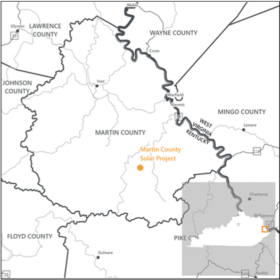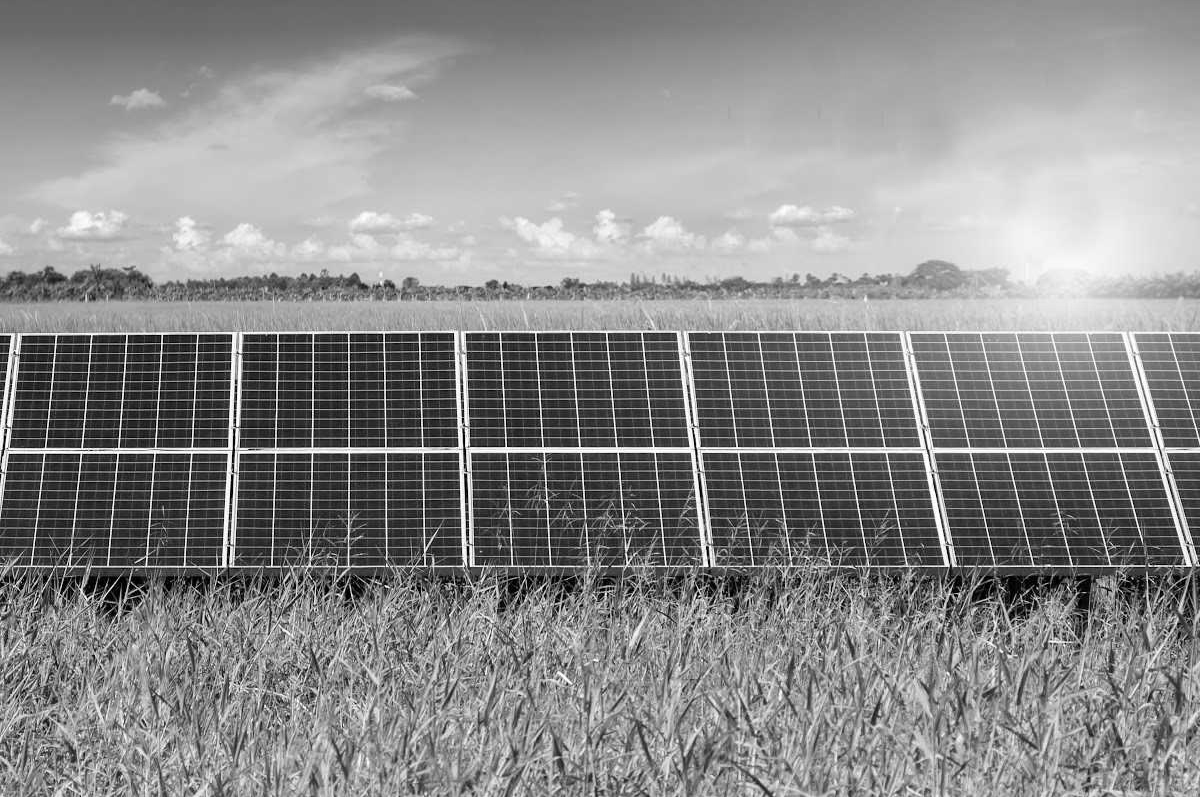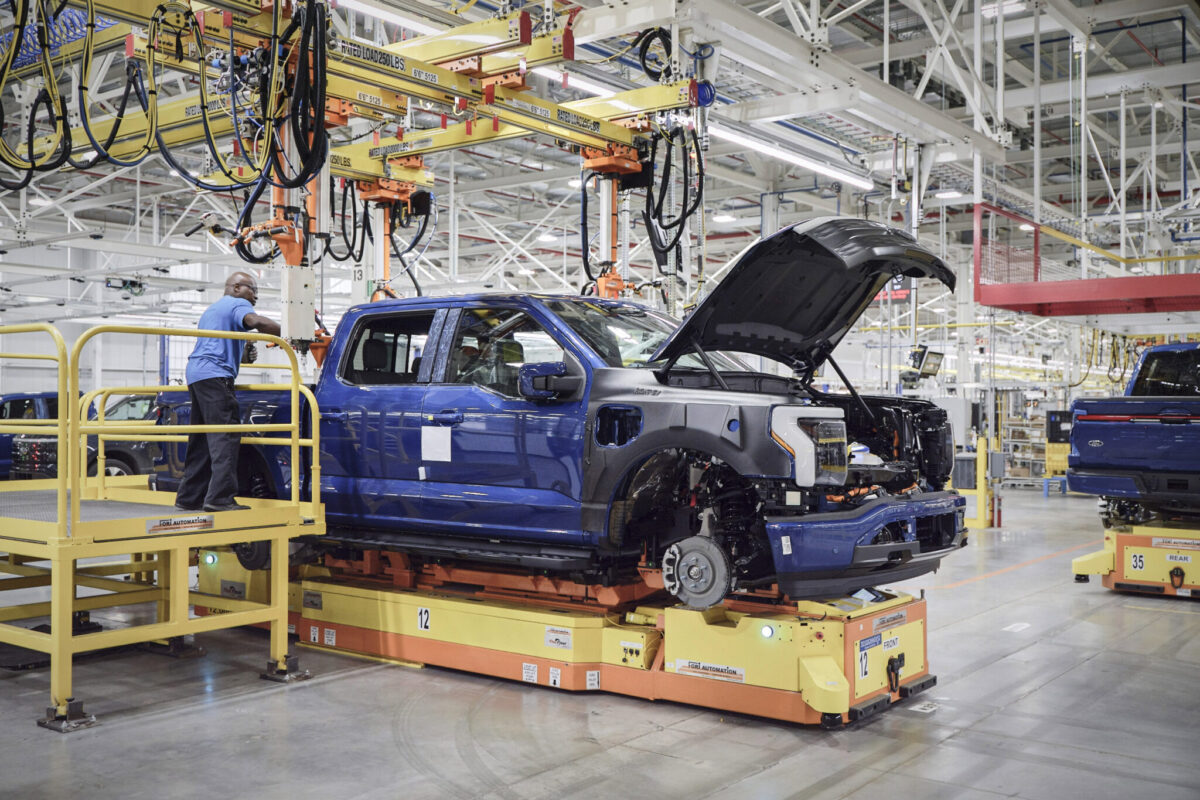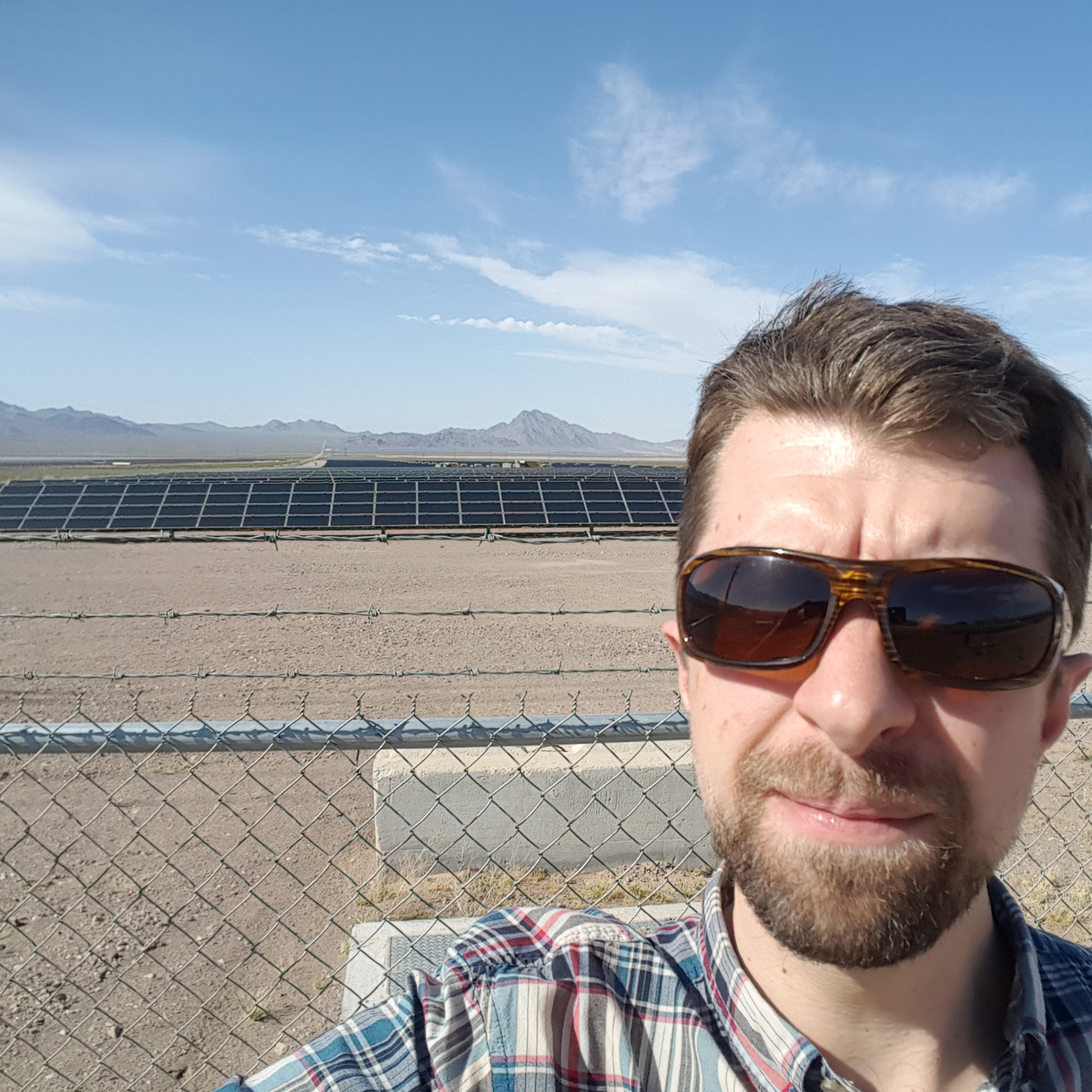Toyota may have ranked 52nd overall in the Solar Energy Industries Association’s (SEIA) 2022 Solar Means Business report for corporate users of solar energy, but the global manufacturer ranked first among U.S. automakers for the use of solar energy across its manufacturing operations with 21.7 MW of power capacity as of December 2022.
Since the SEIA report was published, Toyota has added 30 MW of solar to Alabama operations and now will add 100 MW(ac) of solar for its Kentucky-based operations.
Toyota Motor North America signed a virtual power purchase agreement (VPPA) this week with developer Savion for the offtake of a 100 MW brownfield solar project to be built on a reclaimed coal mine in Martin County, Kentucky.
Located on the border of Kentucky and West Virginia in Pilgrim, Ky., the Martiki Coal Mine is a 1,200 acre former mountaintop coal mine that was closed in the 1990s. The brownfield site has clear access to light from the sun, making it an ideal location for reclamation and the installation of solar panels. Construction on the project is anticipated to begin mid-year, with commercial operation on track for 2024.
Toyota’s 100 MW initial procurement will be used primarily to help reduce the company’s carbon footprint across its North America operations, supplementing the environmental stewardship in Kentucky, where Toyota’s largest vehicle manufacturing plant in the world is located. The new project procurement is in line with Toyota’s plans to make all its North American manufacturing operations carbon neutral by 2035.
“It is important that renewable power is more available to large-scale U.S. energy buyers, and converting brownfields like this offers a path forward for former energy communities to take advantage of the infrastructure they already have with transmission lines while providing clean energy to the grid,” said David Absher, senior manager of environmental sustainability, Toyota Motor North America.
According to the developer’s website, the Martin County solar site has the potential to be expanded to 200 MW in the next few years, with the initial 100 MW providing enough power for 33,000 Kentuckyan homes. The project is ideally situated nearby an existing 138 kV American Electric Power (AEP) power substation, the Inez Substation, making grid interconnection easy for the utility solar project.

Siting and permitting for the Martin County Solar facility kicked off in February 2020 and the project later received a $231 million industrial bond from the Kentucky Economic Development Finance Authority and $600,000 of sales tax incentives from the Kentucky Enterprise Initiative Act. Once complete, the project will provide Martin County about $300,000 per year in tax revenue.
At peak construction, the developer will employ 300 construction workers.
Savion is developing the project with the support of local partner Edelen Renewables, a Lexington, Ky.-based developer of renewable energy projects in former coal, oil and gas drilling and resource-producing regions from Texas to Kentucky. In addition to a recent partnership with Arcadia and the American Farmland Trust to deploy 500 MW of community solar, Edelen also works with Fortune 50 companies to site the development of renewable energy projects such as Martin County, Ky.
At the time of the project’s December 2021 permitting approval, Savion had five coal mines sited for development in Kentucky, West Virginia and Virginia with about 550 MW of solar development potential over the next few years, representing more than $500 million of capital commitment projects.
Reclaimed coal sites present unique challenges to brownfield solar development which include:
- Outstanding mining permits and bonds
- Differential settlement of ground means use of fixed-tilt racking is used instead of single-axis tracking, which reduces electricity production from the system
- Topography limits ability to consolidate array, leading to increased construction and lease costs
- Increased civil construction costs
- Increased racking costs. Must drill and backfill each post/pile hole with concrete.
In early April, the Internal Revenue Service issued guidance on “energy communities” as defined by the federal Inflation Reduction Act. These communities could be in former coal country where people are experiencing high rates of unemployment due to the closing of mines. Read more about what an energy community is here.
The IRA includes a 30% investment tax credit for the cost of developing renewable energy resources. Another 10% adder is applied to projects installed in energy communities, which have now been defined by the IRS:
- A brownfield site – defined as real property, the expansion, redevelopment, or reuse of which may be complicated by the presence or potential presence of a hazardous substance, pollutant, or contaminant and certain mine-scarred land.
- Statistical area – a metropolitan statistical area or non-metropolitan statistical area with a 0.17% or greater unemployment rate and 25% or greater tax revenues related to fossil fuel extraction, processing, transportation, or storage. These areas must also have an unemployment rate at or above the national average unemployment rate for the previous year.
- Coal closure – a census tract (or a census tract directly adjoining such census tract) in which a coal mine has closed after December 31, 1999, or in which a coal-fired electric generating unit has been retired after December 31, 2009.
This content is protected by copyright and may not be reused. If you want to cooperate with us and would like to reuse some of our content, please contact: editors@pv-magazine.com.









By submitting this form you agree to pv magazine using your data for the purposes of publishing your comment.
Your personal data will only be disclosed or otherwise transmitted to third parties for the purposes of spam filtering or if this is necessary for technical maintenance of the website. Any other transfer to third parties will not take place unless this is justified on the basis of applicable data protection regulations or if pv magazine is legally obliged to do so.
You may revoke this consent at any time with effect for the future, in which case your personal data will be deleted immediately. Otherwise, your data will be deleted if pv magazine has processed your request or the purpose of data storage is fulfilled.
Further information on data privacy can be found in our Data Protection Policy.